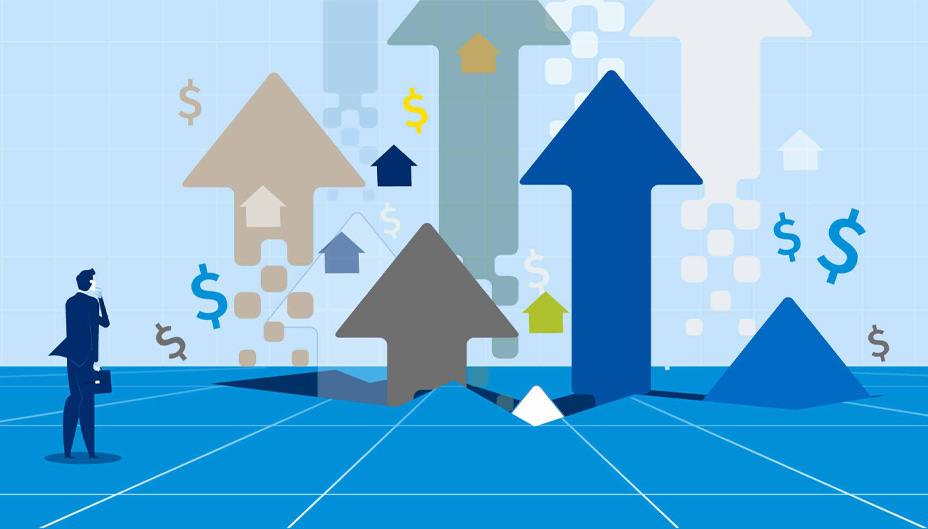How an economist's fake money saved his country from high and uncontrolled inflation
This is a true story about how an economist and his buddies tricked their country’s people into saving it from high and uncontrolled inflation.
They had a crazy, unlikely plan, and it worked.
Thirty years ago, their country’s inflation rate hit 80 percent a month! At that rate, if eggs cost $1 one day, they'll cost $2 a month later. If that keeps up for a year, the eggs will cost $1,000.
In practice, this meant stores had to change their prices every day. The guy in the grocery store would walk the aisles putting new price stickers on food. Shoppers would run ahead of him, so they could buy their food at the previous day’s price.
The problem started in the 1950s, when the government printed money to build a new capital. By the 1980s, an inflation pattern was in place.
It went something like this:
New President comes in with a new plan.
President freezes prices and/or bank accounts.
President fails.
President gets voted out or impeached.
Repeat.
The plans succeeded at only one thing: Convincing every citizen the government was helpless to control inflation.
There was, however, one more option that no one knew about. It was dreamed up by four guys at a Catholic university. The only reason they enter the picture now — or ever — is because there happened to be a new finance minister in 1992, who — guess what? — knew nothing about economics. So, the minister called the economist who is the hero of this story.
Let’s call the economist Ed.
“He said, ‘Well, I've just been named the finance minister. You know I don’t know anything about economics, so please come meet me tomorrow,’” Ed recalls. “I was terrified.”
Ed had been waiting decades for this call.
Ed and his three friends had been studying their country’s inflation problem since they were graduate students — four guys at the campus bar, complaining to each other about how no one else knew how to fix this. But, they knew how, and now they were being told “Fine, do it your way.”
Ed was invited to meet the president.
“I asked for an autograph for my kids,” Ed says. So, the president wrote Ed's kids a note that said, “Please tell your father to work fast for the benefit of the country.”
The four friends set about explaining their ideas. You have to slow down the creation of money, they explained. But, just as important, you have to stabilize people's faith in money itself. People have to be tricked into thinking money will hold its value.
The four economists wanted to create a new currency that was stable, dependable, and trustworthy. The only catch: This currency would not be real. No coins, no bills. It was fake.
“We called it Real Value Units — RVUs,” Ed says. “It was virtual; it didn't exist in fact.”
People would still have and use the existing real currency. But everything would be listed in RVUs, the fake currency. Their wages would be listed in RVUs. Taxes were in RVUs. All prices were listed in RVUs. And RVUs were kept stable — what changed was how much each URV was worth in real currency.
Let’s call the real currency ‘dineros.’
Say, for example, that milk costs 1 RVU. On a given day, 1 RVU might be worth 10 dineros. A month later, milk would still cost 1 RVU. But, that 1 RVU might be worth 20 dineros.
The idea was that people would start thinking in RVUs — not dineros, not US dollars — and stop expecting prices to always go up.
“We didn't understand what it was,” says a housewife. “I used to say it was a fantasy, because it was not real.”
Still, people used RVUs. And after a few months, they began to see that prices in RVUs were stable. Once that happened, Ed and his buddies could declare that the virtual currency would become the country’s actual currency.
“From now on, everyone is going to receive their wages, and pay for all the prices, in the new currency,” Ed says. “That is the trick.”
The day they launched the new currency, Ed says, a journalist friend asked him, “Professor, do you swear that inflation will end tomorrow?”
“Yes, I swear.” Ed said.
And, basically, inflation did end, and the country's economy turned around. In the years that followed, it became a major exporter, and 20 million people rose out of poverty.
“We were in awe,” the housewife says. “Everybody was very happy.”
That country is Brazil. The economist who saved it is Edmar Bacha. The once fake money is now the Real.
Edmar Bacha, Yale MA ’65, PhD ’68, has taught at Yale, Columbia, the Catholic University of Rio de Janeiro, and the University of Brasilia, and held positions as economist at the United Nations, the World Bank, and the International Economic Association. In the 1990s, he was part of a group of economists who came up with a plan based on a virtual currency, Units of Real Value (URV), that succeeded in slowing Brazil’s rampant inflation and helped turn the economy around.
“Edmar Bacha, together with a few prominent economists, designed the plan that ultimately ended inflation in Brazil. For me, they represented Economics at its best: applying insights in the service of the poor, the workers, and the entrepreneurs.”
– Ana Cecilia Fieler, Economist
This post is excerpted, edited, and sourced from Banco Central Do Brasil, NPR, and Yale University. The content is for general informational and entertainment purposes only and should not be construed as investment advice.





